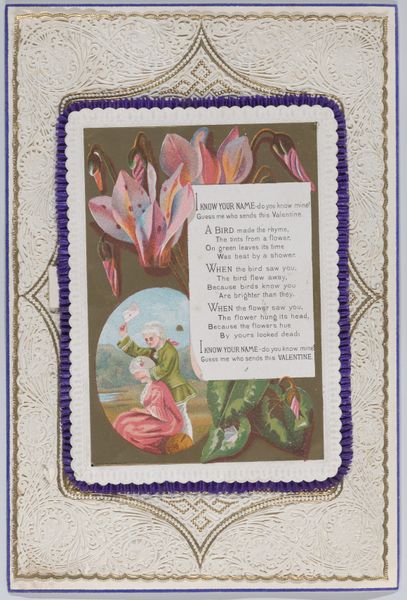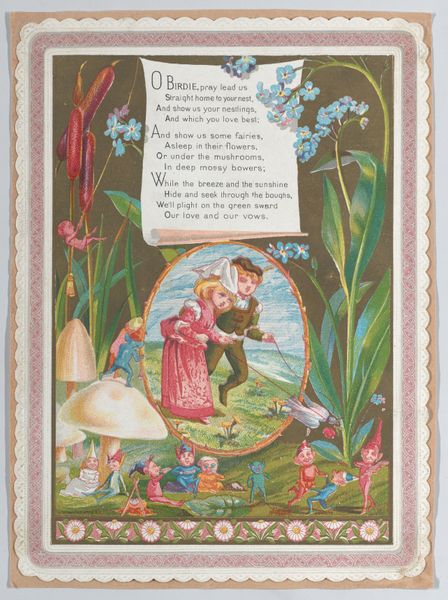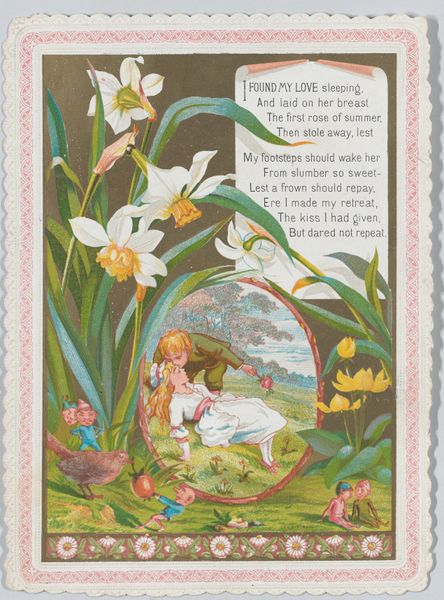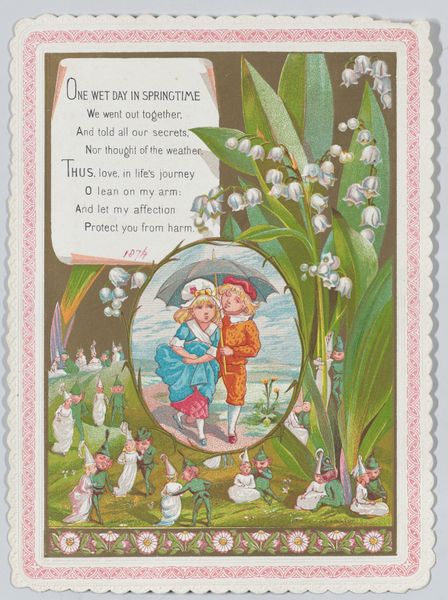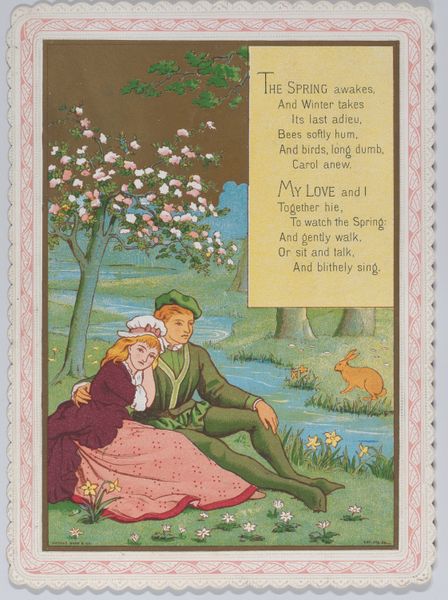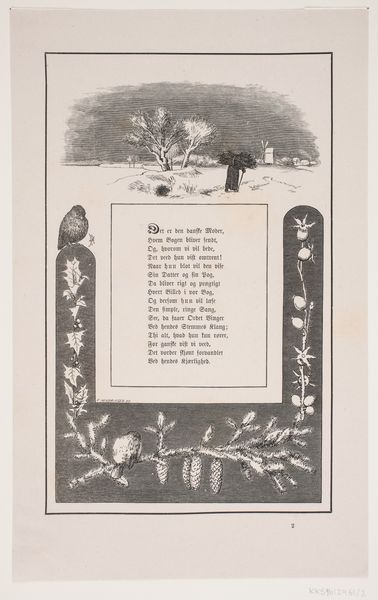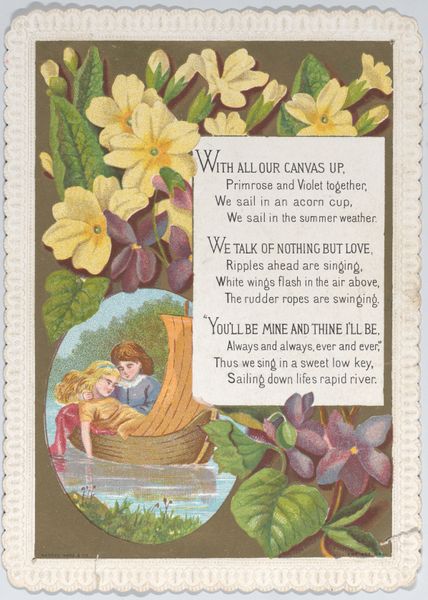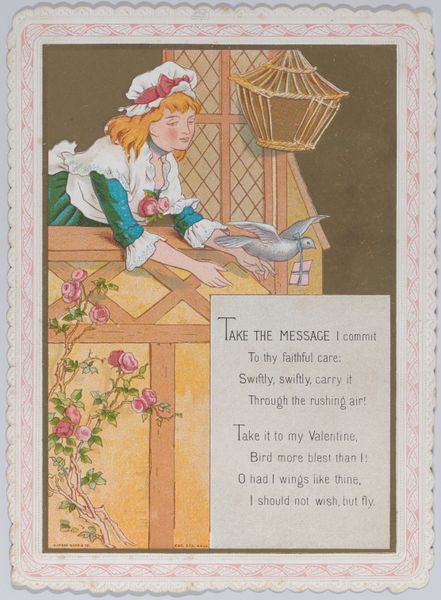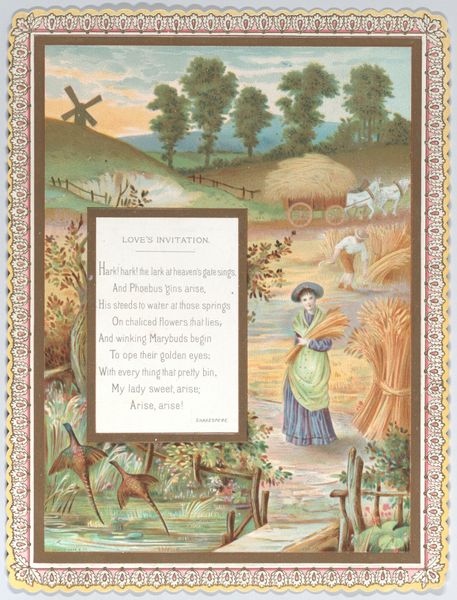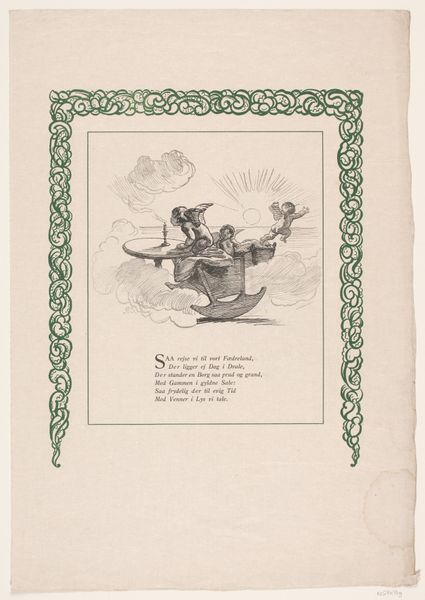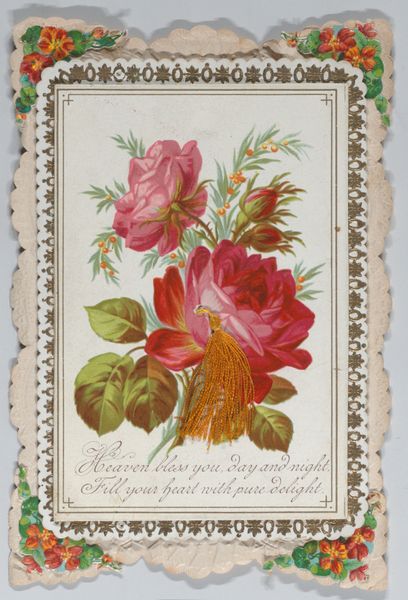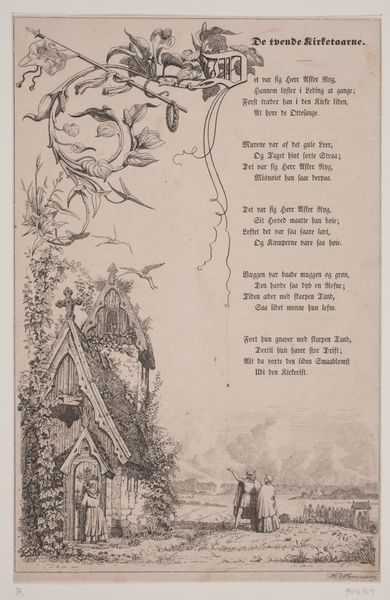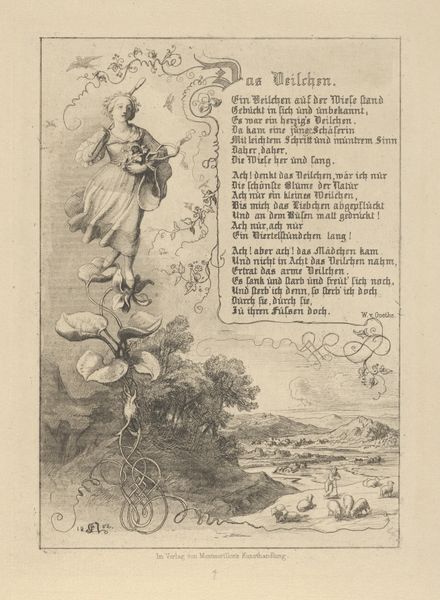
drawing, print
#
drawing
#
magazine cover layout
#
aged paper
#
page thumbnail
#
pastel soft colours
#
yellowing background
# print
#
traditional media
#
flower
#
joyful generate happy emotion
#
retro 'vintage design
#
men
#
watercolour illustration
#
watercolor
Dimensions: Width: 5 5/16 in. (13.5 cm) Length: 3 7/8 in. (9.9 cm)
Copyright: Public Domain
Editor: This is "Valentine," a drawing from 1874 by Kate Greenaway. It’s delicate, almost like a page torn from a very old book of verse. There’s a faded quality, a sepia tone that makes it feel like it's holding onto a secret. The floral arrangement and lovers are so idyllic and whimsical. What cultural symbols stand out to you? Curator: I see a powerful weaving of love and the natural world, key symbols throughout human history. Consider the flowers, likely cyclamen, traditionally associated with love and affection but also separation. Their presence here could represent complex emotional undercurrents within relationships. Are these undercurrents cultural or individual? Editor: Individual I guess, but do tell me more. What’s the psychological impact of, say, using flowers instead of more direct symbols of love? Curator: Flowers act as a symbolic intermediary, a softer way to express potentially difficult emotions. The act of giving a flower, then, isn't just about love but also about vulnerability, a gentle opening. And look at the composition; it’s divided, with the verse and flower above, the scene below—two realms of love intersecting. It mirrors internal versus external expression of affection. Notice how one 'realm' interacts with the other. How are these symbols combined, layered? Editor: So the arrangement acts as a form of emotional encoding? Curator: Precisely. And this encoding speaks volumes about Victorian sensibilities, a time when direct expression of emotion was often discouraged. The use of natural elements allowed for a veiled, nuanced language of love, one layered with multiple meanings, accessible across generations. Editor: It's amazing how much depth a seemingly simple valentine can hold. Thanks. Curator: Indeed, and understanding that historical context transforms our reading of it, I appreciate your astute interest.
Comments
No comments
Be the first to comment and join the conversation on the ultimate creative platform.
